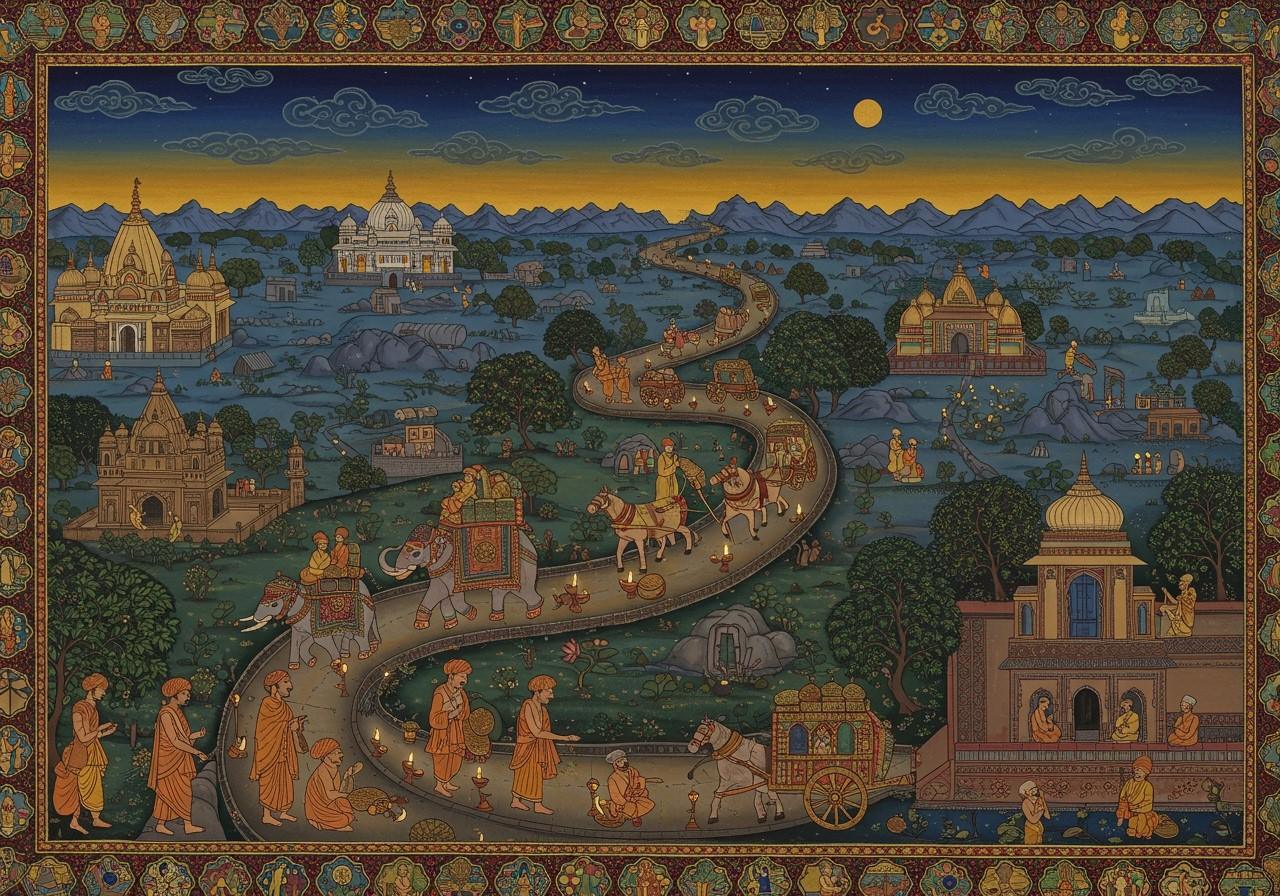
The Grand Trunk Road, often referred to as GT Road, stands as a timeless testament to India’s rich heritage and interconnected past. Spanning approximately 3,655 km from Teknaf, Bangladesh, to Kabul, Afghanistan, this ancient route has witnessed the rise and fall of empires, the flow of commerce, and the exchange of cultures for over 2,500 years. Originally commissioned by Emperor Chandragupta Maurya in the 3rd century BCE, its significance continues to resonate today.
Historical Evolution of the Grand Trunk Road
The GT Road’s story is a layered narrative woven through centuries. From its humble beginnings as a dusty path during the Mauryan Empire, it has undergone numerous transformations, each reflecting the ambitions of the ruling power.
- Mauryan Empire (3rd Century BCE): Emperor Chandragupta Maurya envisioned a route to connect his vast empire, facilitating communication and trade. This marked the genesis of the Grand Trunk Road, initially a simple dirt track used for trade and communication.
- Sher Shah Suri (16th Century CE): Suri significantly enhanced the road, adding vital infrastructure like rest houses (sarais) and milestones (kos minars). These improvements not only eased travel but also standardized distances and provided refuge for weary travelers.
- British Era (19th Century CE): The British, recognizing the road’s strategic importance, undertook extensive modernization, transforming it into a paved highway suitable for large-scale transport. This modernization facilitated the movement of goods and troops, solidifying the road’s role in the colonial economy.
The Grand Trunk Road’s Impact on Trade
The GT Road served as the backbone of trade for millennia. Its connectivity fostered economic growth, allowing the exchange of goods across vast distances.
- Historical Goods: The road facilitated the movement of a wide range of commodities. Spices, textiles, and precious stones from the East flowed westward, while goods from Central Asia traveled to the Indian subcontinent, creating a vibrant marketplace.
- Trade Hubs: Cities situated along the GT Road, such as Agra, Delhi, and Lahore, flourished as major trade hubs. These cities became centers of commerce, attracting merchants and artisans from across the region, fostering economic prosperity. The road also connected rural areas with urban centers, creating new markets and stimulating local economies.
Influence on Indian Culture
Beyond trade, the GT Road has played a crucial role in shaping the cultural landscape of the Indian subcontinent. As people and ideas traveled along this route, a vibrant exchange of cultures occurred, leading to a rich tapestry of traditions.
- Languages & Traditions: The constant movement of people along the GT Road facilitated the spread of languages, customs, and traditions. Interactions between different communities led to the fusion of cultural practices, creating unique regional identities.
- Cuisine: The GT Road became a melting pot of culinary traditions. As travelers traversed the route, they introduced new ingredients and cooking techniques, leading to the evolution of distinct regional cuisines. The sharing of culinary practices enriched the gastronomic landscape of the subcontinent.
Connection to Temples and Religious Sites
The GT Road isn’t just a route for commerce and cultural exchange; it’s also a pathway to spiritual discovery. Dotted along its length are numerous temples, shrines, and religious sites, reflecting the diverse faiths of the region.
- Major Temples: Iconic temples like the Kashi Vishwanath Temple in Varanasi are situated along the GT Road, drawing pilgrims from across the country and beyond. These sacred sites became important stops for travelers seeking spiritual solace and blessings.
- Pilgrimages: The GT Road facilitated pilgrimages to sacred destinations like Haridwar and Amritsar. The road provided a well-trodden path for devotees, making these spiritual journeys more accessible and fostering a sense of shared devotion.
How Poojn.in Helps Preserve Grand Trunk Road’s Cultural Heritage
Poojn.in, India’s largest cultural goods and services store, plays a vital role in preserving the spiritual traditions associated with the Grand Trunk Road. By offering a wide range of authentic puja items, Poojn.in helps maintain the cultural continuity that has flowed along this historic route for centuries.
Explore our collection of traditional items, including:
- Pure copper items crafted by skilled artisans in traditional manufacturing hubs.
- Handcrafted brass puja items following ancient designs.
- Traditional cotton wicks (battis) made using time-honored techniques.
Visit Poojn.in to discover more and support the preservation of India’s rich cultural heritage.
Conclusion
The Grand Trunk Road stands as a powerful symbol of India’s enduring spirit. It’s a route that has witnessed the ebb and flow of history, the dynamism of trade, and the vibrant exchange of cultures. More than just a road, it’s a living testament to India’s interconnected past and a bridge to its future.


